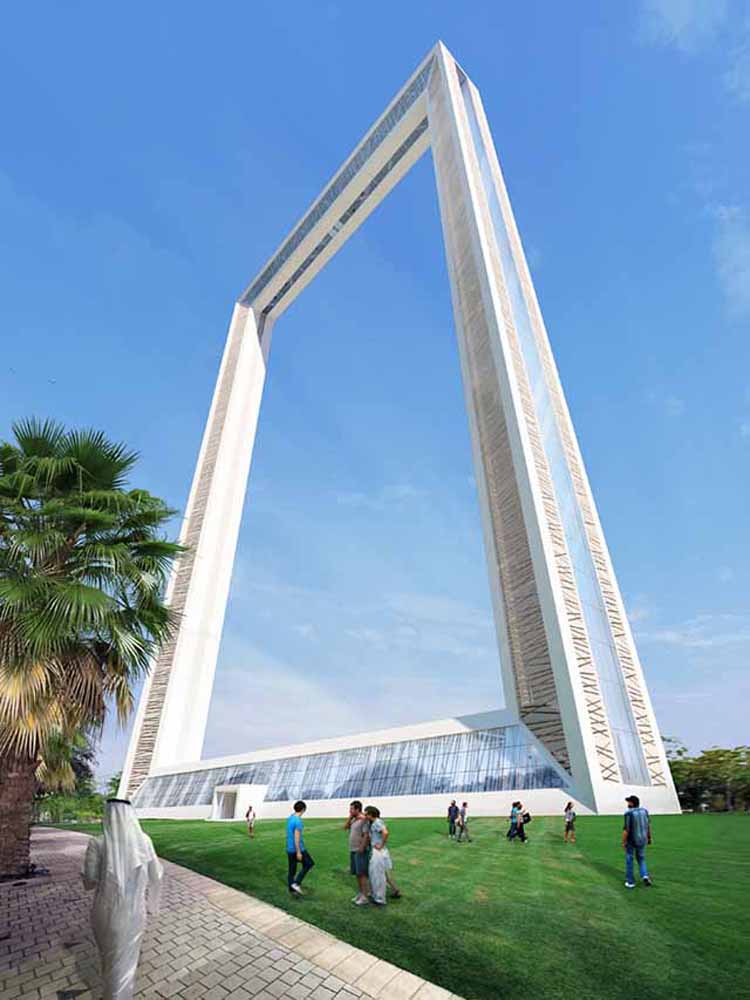Sunshine harnessing solar tiles to cover Dubai Frame
By admin Thursday, 05 March 2015 10:05 AM

Dubai’s latest tourist attraction to be opened this year will add sheen and green to its structure by harnessing sunshine through solar tiles that cover the building.
Dubai - The Dubai Frame, Dubai’s latest tourist attraction to be opened this year, may not have its shiny façade plated in gold, an image typically associated with the glitz and glamour of the city. But the 150m-high window frame-shaped observatory will add sheen and green to its structure by harnessing sunshine through solar tiles that cover the building, the head of Dubai’s Sustainable Committee revealed on Monday.
Abdullah Raffia was speaking after a presentation at the Green Energy Middle East Conference held on the inaugural day of the Middle East Electricity Exhibition.
Rafia, who is also assistant director-general for engineering and planning sector at the Dubai Municipality, said officials looked into all types of materials that will go with the image of Dubai when they discussed about the colour and appearance of the building.
“The whole building … you know 150-metre high … with gold-plated material…. We could have given that as a present to Dubai. But we found a good solution that will give the same colour and sheen to the building that we planned and at the same time produce energy.”
He said the Dubai Frame will open in October.
“We are getting a lot of (energy saving) gadgets in.... It will be a green building and it will be eco-friendly. It will give Dubai, the people of Dubai, what they are worth,” he said.
Located near Gate 4 of Zabeel Park, the structure that will have an almost 100m wide glass-covered skywalk showing the view of both the modern and old sides of Dubai, is expected to attract 2million visitors annually.
Choosing photovoltaic tiles that will produce solar energy, Raffia said, shows the change in attitude of decision makers and Dubai’s approach towards sustainability.
“There are very expensive materials that you would use on an iconic building because the city requires that kind of an image. But the next day when you discover that there is something else that gives you the same effect but also produces energy, we will definitely go for that.”
With revolutionary technological advancement happening in renewable energy sector, Rafia envisions future buildings in Dubai to produce energy in multiple ways.
“We have a city where we can use all the roofs for solar energy ... the sidewalks, the shade of the car parks, all the industrial buildings with inclined roofs, all (other) buildings’ roofs, all the walls, the options are endless,” he said.
With the green building regulations in place and rooftop solar production soon to begin in Dubai buildings, he said, Dubai is heading in the right direction towards becoming one of the top 10 most sustainable cities. In two to five years, according to Raffia, Dubai’s target of 15 per cent renewable energy by 2030, will not just be achievable, but a thing of the past.
“In 50 years, we may send out the last barrel of oil. But we will still be celebrating because we will no longer be depending on such energy by then.”




























Add new comment